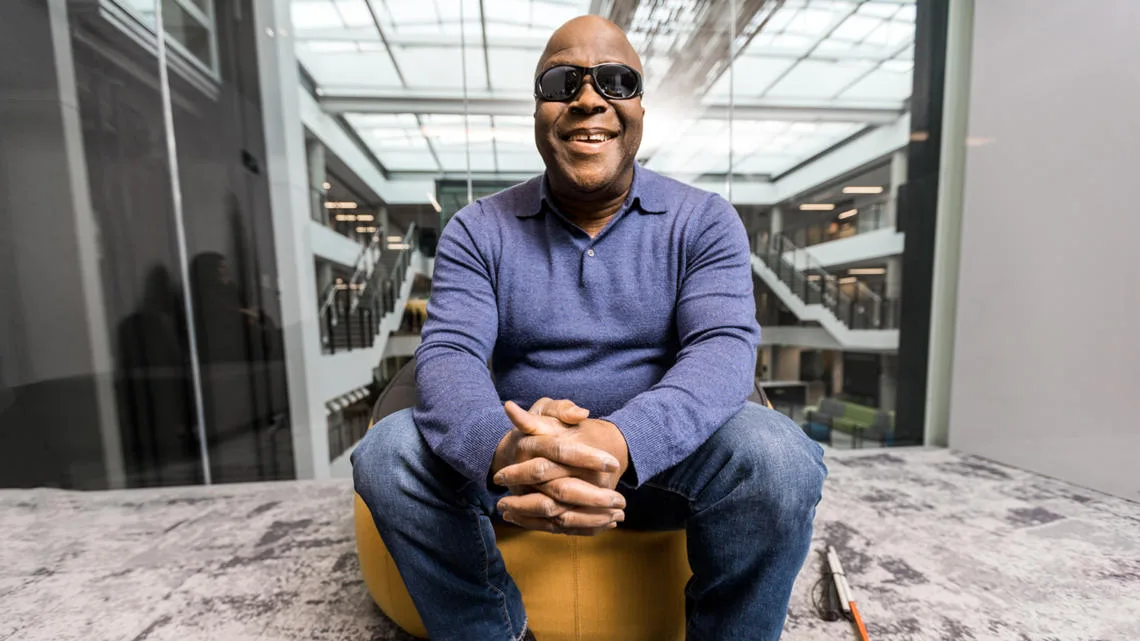Authors
WBCSD Communications
Recent progress in AI provides limitless potential to amplify human capability and to overcome physical and cognitive challenges that people face at work and in daily life. A new WBCSD case study shows how Microsoft – a member of WBCSD’s Future of Work project – is harnessing the power of AI to promote economic and social inclusion for people with disabilities, empowering them to become productive workers and active members of society.
WBCSD’s Future of Work project brings together the insights, innovation and influence of leading companies to develop solutions for better work – today and in the future. Our vision, in which people work to thrive, personally, professionally and as active members of society, applies to all current and potential workers. Mainstreaming inclusion and valuing diversity are therefore an essential requirement when developing business solutions that will shape the future of work.
Microsoft’s AI for Accessibility initiative is an example of how business can support innovations that help people with disabilities overcome barriers to equal opportunities in employment, communication and daily life. Announced in 2018, this USD $25 million grant program rewards passionate developers, startups, universities and non-profits who are building and sharing game-changing AI solutions that enable increased independence and productivity of people with disabilities. It requires the AI-powered technologies, tools and apps that are funded to be developed with, or by, people with disabilities, firmly rooting them in the communities they intend to benefit.
“In a world where computers are capable of hearing, seeing and reasoning with increasing accuracy, AI presents a tremendous opportunity to build tools for people with disabilities.”
Jenny Lay-Flurrie, Chief Accessibility Officer, Microsoft
As AI is capable of hearing, seeing, speaking and reasoning with increased accuracy, smart and affordable software and devices can help workers with a disability develop professional skills and execute task that they would otherwise not be able to. Microsoft’s Seeing AI is a great example of a free mobile app designed for the low vision community that harnesses the power of AI to describe people, text and objects in proximity. As another example, Our Ability, Inc. has won an AI for Accessibility grant for advancing its work on inclusive hiring. The organization has developed an accessible and intuitive AI-powered chatbot which helps employment seekers with cognitive disabilities prepare for job interviews, and employers to find workers with the skills they need.
What’s in it for business? In the United States, unemployment rates are more than twice as high for people with disabilities. On top of that, a large proportion of those with a disability – about 8 in 10 – are not even part of the labor force, compared to about 3 in 10 of those with no disability. For business, this high degree of exclusion from employment means losing out on a large proportion of the productive population and on the unique value people with disabilities offer regarding workforce productivity, diversity and corporate culture. After all, Accenture revealed that companies that embrace best practices in hiring and supporting people with disabilities in their workforce, have historically outperformed their peers.
—
Read WBCSD’s new case study for more information.
The Microsoft AI for Accessibility program is currently seeking project proposals that aim to accelerate mental health research, data insights and innovations using AI. Apply for a grant via the online application form. Deadline: 13 March 2020.
More information
Get inspired for action by exploring WBCSD’s full case study collection on the Future of Work Hub and reach out to us if you are interested in joining the Future of Work project.
Contacts:
- Kitrhona Cerri, Director Social Impact, WBCSD (cerri@wbcsd.org)
- Julie Zunker, Global Affairs Director, Microsoft (jzunker@microsoft.com)
Outline
